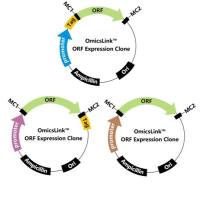A Genetic Basis for Cardiac Arrhythmias: Current Status and the Future
互联网
379
Cardiac arrhythmias are major causes of morbidity and mortality, including sudden cardiac death. Sudden cardiac death in the United States occurs with a reported incidence of greater than 300,000 persons per year (1 ). Although coronary heart disease is a major cause of death, other etiologies contribute to this problem. In many of these nonischemia-related cases, autopsies are unrevealing. Interest in identifying the underlying cause of the death in these instances has been focused on cases of unexpected arrhythmogenic death, which is estimated to represent 5% of all sudden deaths. In cases in which no structural heart disease can be identified, the long QT syndrome (LQTS; ref. 1 ), ventricular preexcitation (Wolff-Parkinson-White syndrome; 2 ), and idiopathic ventricular fibrillation or Brugada syndrome (characterized by ST-segment elevation in the right precordial leads with or without right bundle branch block; 3 ) are most commonly considered as likely causes. Another important disease in which arrhythmias are thought to play a central role is sudden infant death syndrome (SIDS; 4 ), a disorder with no structural abnormalities. Arrhythmogenic right ventricular dysplasia (ARVD) is also a significant cause of sudden death (5 ) and is considered to be a primary electrical disease despite being associated with fibrosis and fatty infiltration of the right ventricle. The arrhythmias associated with ARVD have also been seen in other disorders in which structurally normal myocardium is seen, such as catecholaminergic ventricular tachycardia (6 ). The purpose of this chapter is to describe the current understanding of the clinical and molecular genetic aspects of inherited diseases in which arrhythmias are prominent features.









